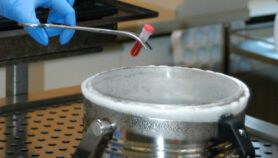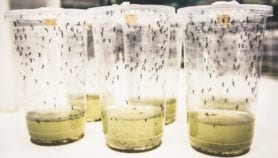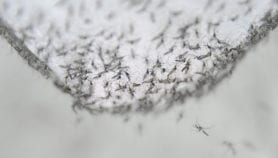By: Pablo Correa
Send to a friend
The details you provide on this page will not be used to send unsolicited email, and will not be sold to a 3rd party. See privacy policy.
[BOGOTÁ] Genetic mutations in pests that allow them to develop resistance to genetically-modified (GM) crops may be much more diverse in field conditions than in laboratory tests, according to a study.
Laboratory tests are commonly used to develop strategies to fight emerging resistance in plant pests but these new discoveries suggest that such testing itself may, in this case, be insufficient.
The newly discovered mutations may also mean that a commonly used strategy for reducing resistance may be less effective than believed, according a study in Proceedings of the National Academy of Sciences, published last month (11 June).
Haonan Zhang, a scientist from Nanjing Agricultural University in China, and his research team, looked at genetic mutations in the cotton bollworm (Helicoverpa armigera) taken from fields of genetically modified (GM) cotton in northern China, and found that the bollworm has more diverse genetic mutations — allowing it potentially to survive on GM crops — than previously thought.
As well as the recessive mutations previously observed during laboratory studies, researchers also identified ‘dominant’ mutations that can shield against toxins such as Bacillus thuringiensis (Bt) — a naturally occurring microorganism that produces a toxin which only kills organisms with alkaline stomachs, namely insect larvae — and other insecticides.
This means that a single copy of a mutated gene is enough to confer pest resistance on its offspring.
It may also mean that a commonly used defence against resistance — a ‘refuge strategy’ in which GM fields are flanked by non-GM plants, allowing non-resistant pests to thrive and mix with resistant ones, thus driving the overall numbers of resistant pests down — are less effective than previously though.
"Dominant resistance is more difficult to manage and cannot be readily slowed with refuges, which are especially useful when resistance is recessive," said Bruce Tabashnik, head of entomology at the University of Arizona, and co-author of the study.
Tabashnik added that in addition to known mutations, the team had found "lots of other mutations, most of them in the same gene, but one in a completely different gene."
"We want to anticipate what genes are involved, so we can proactively develop strategies to sustain the efficacy of Bt crops and reduce reliance on insecticide sprays. The implicit assumption is that what we learn from lab-selected resistance will apply in the field."
Today, that assumption has been challenged, but rising levels of resistance in cotton fields may offer new ways of understanding what is happening, said Tabashnik.
Graham Head, head of global insect resistance management at Monsanto, a promoter of Bt cotton seeds, told SciDev.Net that the early detection of resistance is an important goal.
But he added that Zhang’s study does not establish a direct relationship between these new genetic mechanisms and larvae’s true ability to survive in cotton fields.













